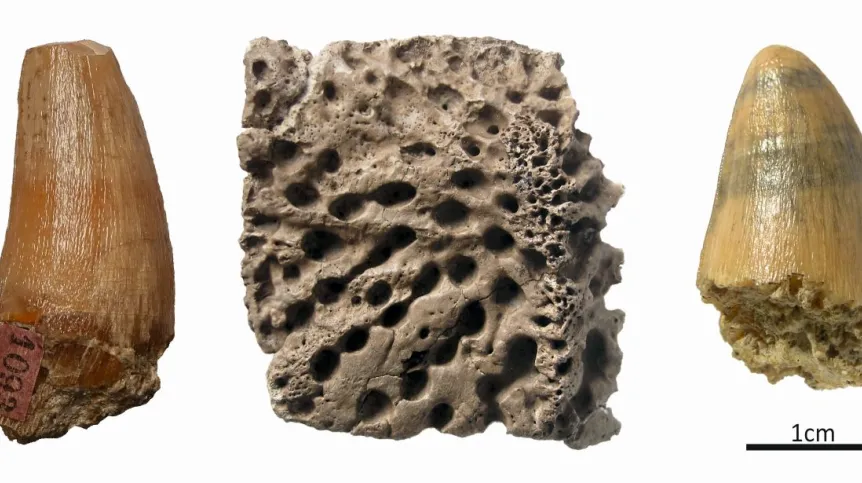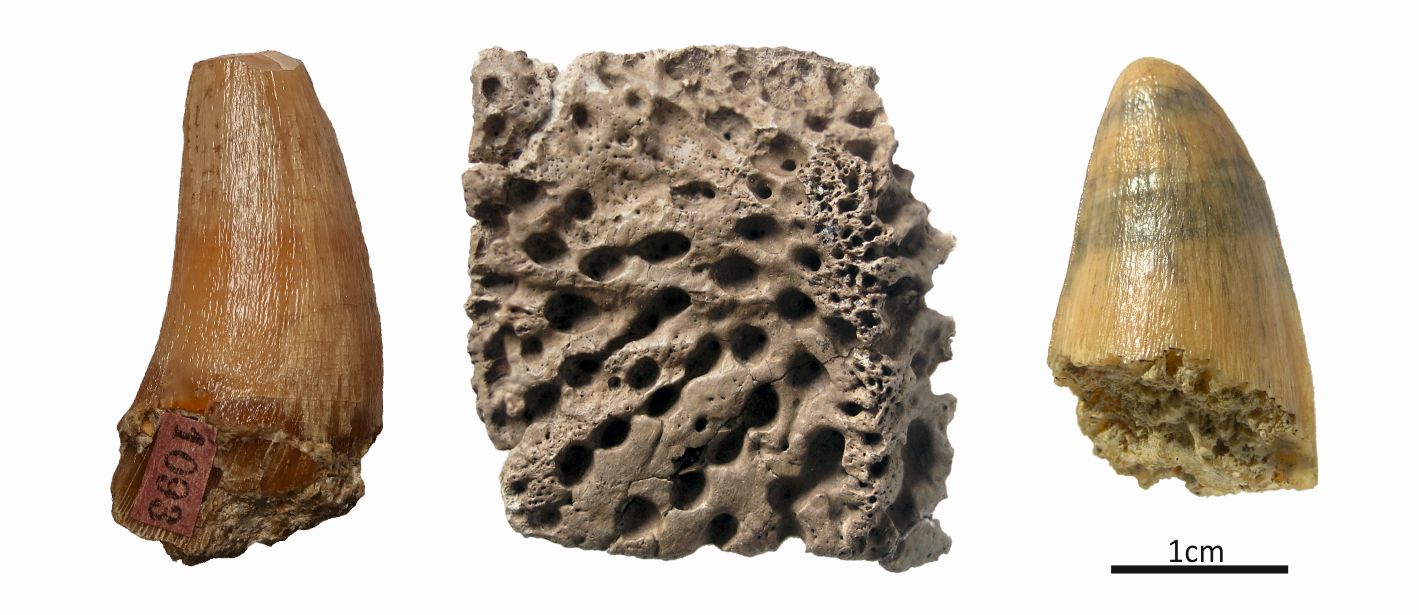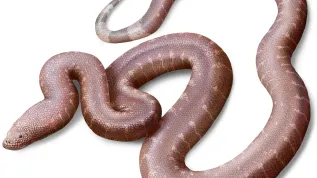
17 million years old crocodile remains were found in the 'Bełchatów' mine. They come from the Miocene - the last such warm and humid period in the history of the Earth, favourable for lush vegetation and a wide variety of animal species.
The discovery in the 'Bełchatów'mine's Szczerców Field was made by scientists from the Faculty of Geology and the Faculty of Biology of the University of Warsaw, the Institute of Palaeobiology of the Polish Academy of Sciences and the Polish Academy of Sciences Museum of the Earth, and the Moravian Museum (Czechia).
'We were looking for vertebrate remains and this was the only fragment we managed to find at that time. At first, it resembled an ordinary piece of bone. Only when we prepared it and looked at its other, very characteristic side, there was no doubt that it was a crocodile skin plate, or osteoderm', says co-discoverer Marcin Górka, PhD, from the Faculty of Geology of the University of Warsaw.
Analysis of the sources showed that these were the northernmost remains of a crocodile from a period of 23 million years ago. At that time - from the Miocene to the Quaternary - there was no crocodile site located further north. Older, Cretaceous crocodiles are known from Sweden, and those from the Paleogene also from Denmark and as far away as the Canadian Arctic.

The remains found in the 'Bełchatów' mine come from the Miocene (23 million to 5.3 million years ago), the last such warm and humid period in the history of the Earth. Especially the early and middle Miocene were characterized by particularly high temperatures (the so-called Miocene Climatic Optimum).
'Since the climate in the Miocene was about 3-4 degrees warmer than today, at least according to estimates, humidity was also higher. This caused all kinds of vegetation to grow very abundantly in these conditions, and lignite deposits were formed from the remains of this vegetation. The climate also favoured the occurrence of various species of animals - marine and terrestrial ones. The remains of the latter are particularly numerous in karst and lake deposits', the researcher describes.
The Miocene was also characterized by significant tectonic activity, which was mainly visible in southern and central Poland. Tectonic sinkholes, often filled with water, formed in many places.
'These reservoirs, lakes and swamps were conducive to the development of vegetation, but they were also a kind of trap for all plant and animal matter that fell into them, which we can discover today', the researcher says.
Among the animals, crocodiles deserve special attention. These animals typically live in subtropical and tropical areas. In the early and middle Miocene, Central Europe was a habitat for two different types of crocodiles: Gavialosuchus and Diplocynodon. The first was a marine genus, whose total body length exceeded 6 meters. The second crocodile was Diplocynodon - an endemic, mostly freshwater genus, reaching 1.5 to 3 meters.
'The plate we found does not have one hundred percent features that could indicate which genus we are dealing with. However, it was most likely an extinct Diplocynodon - a relative of modern alligators. We believe so because, like modern alligators, it had a greater tolerance for cold weather, which means it could have occurred further north', Górka explains.
It is not easy to find such a tiny, approx. 30 mm fragment in such a large excavation. 'It is almost like mushroom picking. What good is walking in the forest if you are not lucky? So you have to be lucky. But you also have to know what you are looking for, so as not to jump at everything; to have a slightly sensitive eye', Górka admits.
He adds that working in a mine requires a lot of attention. 'Visits to the mine are always associated with danger. We are aware that we are a burden for the employees and management. They have to take ensure our safety, and at the same time we take them away from their duties. We are therefore extremely grateful for allowing us to do this work', the geologist from the University of Warsaw emphasises.
The paper published by the Polish-Czech team of researchers presents several earlier finds of crocodile remains from Czechia and Poland. The described material also includes an archival find of a crocodile tooth from shallow-water marine sediments in Pińczów. This tooth was discovered by Professor Andrzej Radwański in the 1960s or 1970s. Another of the presented remains is a tooth from Židlochovice (Czechia), from around 14 million years ago. It comes from the collection of Professor Anton Rzehak, but it was never mentioned in any of his works, despite the fact that the researcher correctly identified it as a crocodile tooth on a handwritten label.
The discovery was described in a paper published in the journal „Acta Palaeontologica Polonica”.
PAP - Science in Poland, Ewelina Krajczyńska-Wujec (PAP)
ekr/ bar/













